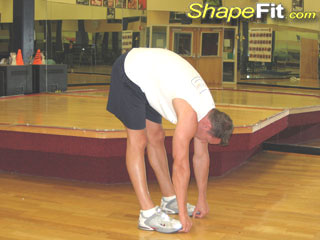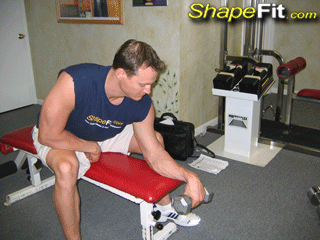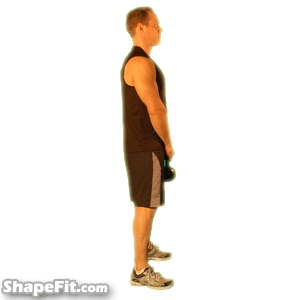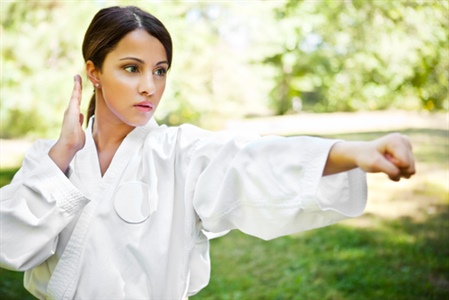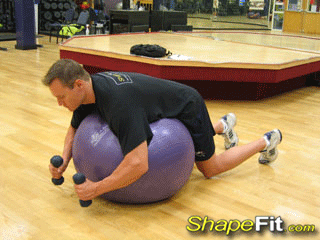Stretching Exercise Guides with Photos and Instructions
Including stretching as a part of your overall fitness program is very important for improving flexibility, increasing blood flow, helping to assist in having better posture and improving balance. We provide step-by-step instructional guides to help you choose the best stretching exercises for each muscle group. Each instructional exercise guide has detailed photos and training advice to show you how to properly perform the stretching movements so you can execute the exercises safely and effectively!
ABDOMINALS – The important core muscles of your abdominals are crucial for having a strong trunk for everyday activities like pickup up your kids, lifting groceries and even getting out of bed in the morning. Stretching your abs will help to lengthen and strengthen these key muscles which offer so many amazing benefits.
- Abdominal Stretch
- Abs Active
- Abs Passive
BACK – The back is one of the most injury-prone areas for millions of people. Back injuries often result in pain, so it’s absolutely vital that you implement several stretching exercises each week to target this key area of the body to stay healthy and pain-free.
- Back Active
- Back Passive
- Cat Stretch
- Lower Back Twist
- Spinal Twist
- Standing Cat Stretch
- Lower Back Stretch
BICEPS – Too many gym-goers neglect to stretch this muscle group on a regular basis even though it’s one of the most commonly overtrained muscles of the body. Adding a few key biceps stretches will help to lengthen the muscle belly and might even help to spur additional growth.
- Kneeling Biceps Stretch
CHEST – Stretching the pectoralis muscles of the chest is beneficial for elongating this commonly used muscle group along with increasing flexibility which is beneficial when doing important compound exercises like the barbell bench press.
- Behind Back Chest Stretch
- T Stretch
FOREARMS – The forearms are used in every upper body exercises as a secondary muscle group so it’s critical that you include a few stretching sessions per week for this key area.
- Palms Up Forearm Stretch
NECK – Neck pain and discomfort is extremely common in millions of people who work office jobs and sit behind a computer all day long. It is typically due to improper posture, so be sure to sit up straight and also include different stretching exercises for the neck to help strengthen this area.
- Neck Circle Rolls
SHOULDERS – The shoulders hold a lot of tension during normal day-to-day activities and carry the brunt of the work during upper body exercises. Therefore, it is very important to make sure to implement several of these key stretches to help increase the flexibility and stability of this important muscle group:
- Cross Body Stretch
- Kneeling Reach
- Rear Body Reach
TORSO – Increasing strength, stability and flexibility in your torso goes a long way for living a pain-free life since the torso is made up of many key muscles which include your core, abs and back.
- Seated Torso Reach
- Seated Trunk Twist
- Standing Torso Reach
TRICEPS – The triceps are another muscle group that is commonly neglected when it comes to stretching but this muscle group works as a secondary support system for all chest and shoulder exercises so it’s vital that you include several key stretches that target this area.
- Triceps Stretch
CALVES – You use your calves every time you walk, let alone the amount of stress they are under when training your legs, so make sure to stretch out this key muscle group on a regular basis for optimal flexibility and stability.
- Calf Stretch
- Hands Down Calf Stretch
- Standing Calf Stretch
GROIN & INNER THIGHS – Groin pulls are a common injury in athletes and regular gym-goers who weight train and do cardio exercise. An injury to this area will put you out for weeks, so increasing flexibility and overall range of motion in this area is very important.
- V Stretch
- Seated Inner Thigh
- Standing Inner Thigh
HAMSTRINGS – Having muscle symmetry in your legs is crucial for not only aesthetics but, most importantly, to avoid injuries like muscle pulls, which could occur from having an imbalance between your quadriceps and hamstrings. So always remember to give equal attention to all of your leg muscles and include hamstring stretches to this commonly overlooked muscle group.
- Hamstring Grab
- Hamstrings Passive
- Seated Spread Eagle
- Seated Hurdler Stretch
- Standing Hamstring
- Lying One-Leg Hamstring
HIPS & BUTT – The hips and glutes are very important for lower body strength, power and day-to-day functioning, so include specific stretches for these muscles for increased strength and flexibility.
- Prone Hip Stretch
- Lying Hip Stretch
- Hip Flexor
- Hip Stretch
- Hip Flexors Active
- Glute Stretch
QUADRICEPS – Every time you get out of bed and walk around, you’re working the muscles of your quadriceps and this stimulus doesn’t even come close to the overload your quads get when you’re in the gym doing heavy squats, deadlifts, leg presses or lunges. So make sure you include several quadricep stretches after your leg workouts to keep this muscle group flexible and strong.
- Prone Quad Stretch
- Lying Side Quad Stretch
- Standing Quad Stretch
-
Hanging Knees To Chin Raises – Abs Exercise Guide
Hanging knees to chin raises, also known as gorilla ch
-
Exercises for Losing Weight
Obesity is a very commonly found problem throughout the world. It can
-
Back Active – Stretching Exercise Guide with Photos
Exercise Advice: Stand with feet shoulder width apart.
-
Try Yoga
Considering it’s thousands of years old, referring to yoga as a
-
Front Deltoid Raise on Exercise Ball – Instructional Guide
Exercise Advice: Sit on an exercise ball with your bac
-
Saw – Pilates Exercise Guide with Photos
Pilates Exercise Instructions: Sitting legs straight,
- DON'T MISS
- Seated Cable Rows – Back Exercise Guide with Photos
- Standing Rear Deltoid Flyes – Elastic Bands Exercise Guide
- Wall Squats – Medicine Ball Exercise Guide with Photos
- Dumbbell Wrist Flippers – Forearm Exercise Guide with Photos
- Lying Dumbbell Extensions – Triceps Exercise Guide
- Hanging Knees To Chin Raises – Abs Exercise Guide
- Smith Machine Stiff Leg Deadlifts – Hamstring Exercise Guide
- Smith Machine Shrugs – Trapezius Exercise Guide with Photos
- Isometric Sides – Neck Exercise Guide with Photos
- Exercise With A Buddy….Your Dog!
